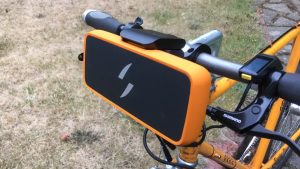What is the Best Kind of Bike to Convert to Electric?
Introduction
The world of cycling is evolving, and electric bikes (e-bikes) have become a popular choice for riders looking to add an extra boost to their pedaling power. If you’re considering joining the e-bike revolution but already have a traditional bicycle, you might be wondering which type of bike is the best candidate for conversion. In this article, we’ll explore the key factors to consider and help you determine the best kind of bike to convert to electric.

The Appeal of Electric Bike Conversions
Before delving into the specifics of bike conversion, let’s briefly touch on why electric bikes are gaining so much attention. E-bikes offer several advantages over traditional bicycles, including:
1. Enhanced Riding Experience
E-bikes provide an extra power boost, making it easier to conquer hills and cover longer distances with less effort. This feature is especially appealing for commuters and those looking for a more leisurely riding experience.
2. Eco-Friendly Transportation
Electric bikes are an eco-conscious choice, as they produce zero emissions and reduce your carbon footprint compared to traditional vehicles.
3. Cost Savings
While the initial investment in an e-bike conversion kit can be significant, it often pays off in the long run. You’ll spend less on fuel, maintenance, and parking, making e-bikes a cost-effective alternative.
Factors to Consider
When deciding which bike to convert to electric, you should take several factors into account to ensure a successful and enjoyable e-bike experience.
1. Frame Material
The frame of your bicycle is a crucial factor in the conversion process. The most suitable frames are typically made of steel or aluminum. These materials are strong enough to support the added weight of an electric motor and battery, ensuring a stable ride.
2. Frame Style
Consider the style of your bike’s frame. The two most common styles are diamond and step-through. Diamond frames are more rigid and provide better support for conversion, while step-through frames are more convenient for mounting and dismounting. The choice depends on your personal preference and riding needs.
3. Wheel Size
The wheel size of your bike can affect the performance of your electric conversion. Generally, 26-inch and 700c wheel sizes are the most compatible with conversion kits. These sizes offer a wide selection of e-bike components and ensure a smoother ride.
4. Bike Condition
Assess the condition of your current bike. It’s best to convert a bicycle that’s in good shape, as it will require less maintenance and ensure better overall performance. If your bike has any significant structural issues, consider repairing them before proceeding with the conversion.

5. Riding Style and Terrain
Think about your riding style and the type of terrain you’ll encounter most frequently. If you plan to ride on hilly or uneven terrain, you may want a more powerful motor and a larger battery to handle the challenges. Conversely, for city commuting, a less powerful setup may suffice. Find more information here.
6. Budget
Electric bike conversion kits can vary widely in price, depending on the components and features included. Determine your budget and prioritize the components that are most important to you, such as a high-capacity battery or a powerful motor.
The Conversion Process
Once you’ve chosen the best bike for your conversion project, it’s time to explore the conversion process itself. Here’s a simplified overview of the steps involved:
1. Choose a Conversion Kit
Select a conversion kit that suits your needs and budget. Conversion kits typically include an electric motor, battery, controller, throttle, and wiring. Make sure the kit is compatible with your chosen bike and meets your desired specifications.
2. Remove Existing Components
Strip your bike of non-essential components that might interfere with the installation of the conversion kit. This includes the existing drivetrain, pedals, and any unnecessary accessories.
3. Install the Motor
Mount the electric motor on your bike’s frame, typically on the rear wheel hub or in the bottom bracket area. Ensure it’s securely attached and aligned properly.
4. Connect the Electrical Components
Follow the manufacturer’s instructions to connect the battery, controller, throttle, and wiring. Pay close attention to the wiring diagram to avoid errors that could lead to electrical issues.
5. Test and Fine-Tune
Before hitting the road, thoroughly test your e-bike to ensure all components are functioning correctly. Adjust settings as needed to optimize performance and safety.
Conclusion
Converting a traditional bike into an electric bike can be a rewarding project, providing you with the benefits of electric assistance while preserving the bike you already love. To choose the best bike for conversion, consider factors like frame material, style, wheel size, bike condition, riding style, and budget. Once you’ve selected the right candidate, follow the conversion process carefully, and soon you’ll be enjoying the advantages of electric biking. Whether you’re commuting to work, exploring scenic routes, or simply seeking a more enjoyable riding experience, an electric bike conversion can take your cycling adventures to the next level.




